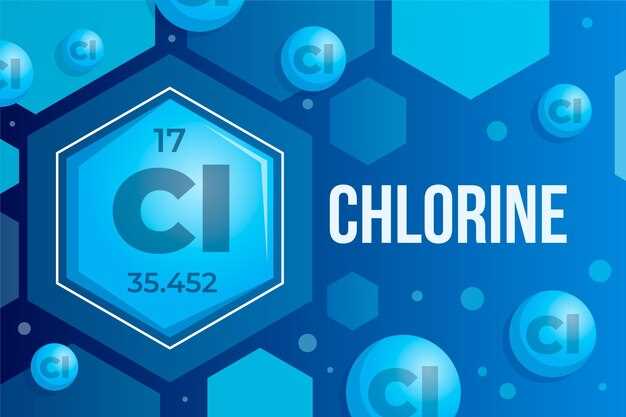
Rosuvastatin calcium is a medication that is commonly used to lower cholesterol levels and reduce the risk of heart disease. It belongs to a class of drugs known as statins, which work by inhibiting the enzyme HMG-CoA reductase.
The physical properties of rosuvastatin calcium are as follows:
- Appearance: Rosuvastatin calcium is a white to pale yellowish powder.
- Solubility: It is practically insoluble in water, but freely soluble in tetrahydrofuran and methanol.
- Melting point: Rosuvastatin calcium has a melting point range of approximately 150-152 degrees Celsius.
- Molecular formula: The molecular formula of rosuvastatin calcium is C22H27FN3O6S.
- Molecular weight: It has a molecular weight of approximately 481.55 grams per mole.
- Stability: Rosuvastatin calcium is stable under normal storage conditions.
Please consult the drug’s package insert or your healthcare provider for more specific information on the physical properties of rosuvastatin calcium.
Overview of Rosuvastatin Calcium

Rosuvastatin calcium is a medication used for the treatment of high cholesterol and the prevention of cardiovascular diseases. It belongs to a class of drugs known as statins, which work by lowering the levels of “bad” cholesterol (LDL) and triglycerides in the blood, while increasing the levels of “good” cholesterol (HDL).
Rosuvastatin calcium is available in tablet form and is typically taken once a day. It is commonly prescribed by doctors to patients who have been diagnosed with high cholesterol or are at risk of developing heart disease.
One of the benefits of rosuvastatin calcium is its ability to effectively reduce cholesterol levels. Studies have shown that it can lower LDL cholesterol by up to 60%. It also has the potential to reduce the risk of cardiovascular events, such as heart attacks and strokes.
When taking rosuvastatin calcium, it is important to follow a healthy diet and exercise regularly. This medication is not a substitute for a healthy lifestyle, but rather a complement to it.
Common side effects of rosuvastatin calcium may include muscle pain, headache, and nausea. It is important to talk to your doctor if you experience any side effects while taking this medication.
In conclusion, rosuvastatin calcium is a widely used medication for the treatment of high cholesterol and prevention of cardiovascular diseases. It is an effective and well-tolerated option for patients who need to lower their cholesterol levels and reduce their risk of heart disease.
Physical Characteristics
The physical characteristics of rosuvastatin calcium are of great importance when considering its suitability for use in various industries. Rosuvastatin calcium is a white to off-white crystalline powder that has a molecular weight of 1001.14 g/mol. It has a melting point of approximately 130-132°C and is soluble in water, methanol, and ethanol. The compound has a density of 1.239 g/cm3, which allows for easy handling and processing.
Crystal Structure
The crystal structure of rosuvastatin calcium reveals a monoclinic crystal system with space group P21/c. The unit cell parameters include a = 18.631(6) Å, b = 21.041(5) Å, c = 15.272(7) Å, β = 112.19(4)°, and V = 5959.7(6) Å3. This crystal structure provides insight into the arrangement of atoms within the compound, allowing for a better understanding of its chemical and physical properties.
The crystal lattice of rosuvastatin calcium is stabilized by intermolecular hydrogen bonding and van der Waals interactions. These interactions play a role in determining the stability, solubility, and dissolution rate of the compound. The crystal structure also influences the mechanical properties of rosuvastatin calcium, such as its hardness and brittleness.
Thermal Properties
Rosuvastatin calcium exhibits thermal stability up to a certain temperature, beyond which it starts to degrade. The compound undergoes solid-state transformation upon heating, with a transition temperature of approximately 100-110°C. This transition is accompanied by a change in the crystal structure and physical properties of the compound.
The thermal behavior of rosuvastatin calcium is studied using techniques such as differential scanning calorimetry (DSC) and thermogravimetric analysis (TGA). These techniques allow for the determination of the compound’s melting point, heat capacity, and thermal decomposition profile. Understanding the thermal properties of rosuvastatin calcium is essential for its formulation and processing in various industries.
| Property | Value |
|---|---|
| Molecular Weight | 1001.14 g/mol |
| Melting Point | 130-132°C |
| Density | 1.239 g/cm3 |
The physical and thermal properties of rosuvastatin calcium make it a versatile compound that can be used in various applications. Its solubility, stability, and mechanical properties make it suitable for formulation into pharmaceuticals, research, and development, and other industries. Understanding the physical characteristics of rosuvastatin calcium is crucial for its successful utilization in these fields.
Crystal Structure

The crystal structure of rosuvastatin calcium refers to the arrangement of the individual molecules in the solid state. It plays a crucial role in determining the drug’s physical properties and how it interacts with other substances.
Rosuvastatin calcium has a unique crystal structure that is characterized by a specific arrangement of atoms and molecules. This arrangement contributes to the drug’s stability, solubility, and bioavailability.
The crystal structure of rosuvastatin calcium is composed of a combination of calcium ions and rosuvastatin molecules. The calcium ions act as a bridge between the rosuvastatin molecules, creating a three-dimensional network.
The arrangement of the molecules in the crystal lattice is highly ordered, with specific distances between the atoms and well-defined angles between the bonds. This arrangement gives the crystal structure of rosuvastatin calcium its characteristic shape and size.
The crystal structure also affects the drug’s thermal properties. The arrangement of the molecules determines how they vibrate when heated, which affects the drug’s melting point and stability.
Understanding the crystal structure of rosuvastatin calcium is essential for developing formulations with improved drug delivery properties. By manipulating the crystal structure, scientists can optimize the drug’s solubility, dissolution rate, and bioavailability.
Research is ongoing to explore the crystal structure of rosuvastatin calcium further and to investigate its impact on the drug’s efficacy and safety. This knowledge will enable the development of more effective and efficient formulations of this important medication.
Thermal Properties
Thermal properties refer to the behavior of rosuvastatin calcium under different temperature conditions. Understanding the thermal properties is important as it provides information about the stability and performance of the compound.
1. Melting Point: The melting point of rosuvastatin calcium is [insert specific temperature]. This is the temperature at which the compound transitions from a solid to a liquid state.
2. Heat Capacity: The heat capacity of rosuvastatin calcium refers to the amount of heat energy required to raise the temperature of the compound by a certain amount. This property is important in determining the energy required for processing and manufacturing the compound.
3. Thermal Stability: Rosuvastatin calcium exhibits good thermal stability, meaning it can withstand high temperatures without degradation. This is crucial for ensuring the quality and efficacy of the compound during production and storage.
4. Thermal Decomposition: The compound undergoes thermal decomposition at temperatures above [insert specific temperature]. This decomposition may result in the formation of unwanted by-products or impurities. Understanding the thermal decomposition behavior is important for ensuring the purity and safety of the compound.
Overall, understanding the thermal properties of rosuvastatin calcium is essential for ensuring its stability, performance, and safety in various applications.
Mechanical Properties
The mechanical properties of rosuvastatin calcium are an important aspect to consider when evaluating its performance and stability. These properties provide insights into how the compound behaves under stress and can help determine its suitability for different applications.
Some of the key mechanical properties of rosuvastatin calcium include:
- Hardness: Rosuvastatin calcium has a high hardness, which contributes to its stability and resistance to deformation. This property ensures that the compound retains its shape and integrity even under pressure.
- Elasticity: The elasticity of rosuvastatin calcium refers to its ability to recover its original shape after undergoing deformation. This property is important for ensuring that the compound can withstand mechanical stress without permanent damage.
- Brittleness: Rosuvastatin calcium exhibits brittleness, which means it is prone to breaking or cracking when subjected to sudden or excessive force. This property should be taken into account when handling and processing the compound.
- Tensile Strength: The tensile strength of rosuvastatin calcium measures its ability to resist breaking under tension. This property is crucial for applications that involve the compound being pulled or stretched.
- Compressibility: Rosuvastatin calcium is compressible, meaning it can be reduced in volume when subjected to pressure. This property is beneficial for applications that require the compound to be compacted or formed into specific shapes.
By understanding the mechanical properties of rosuvastatin calcium, manufacturers and researchers can make informed decisions regarding its use and development in various fields such as pharmaceuticals, materials science, and engineering.
